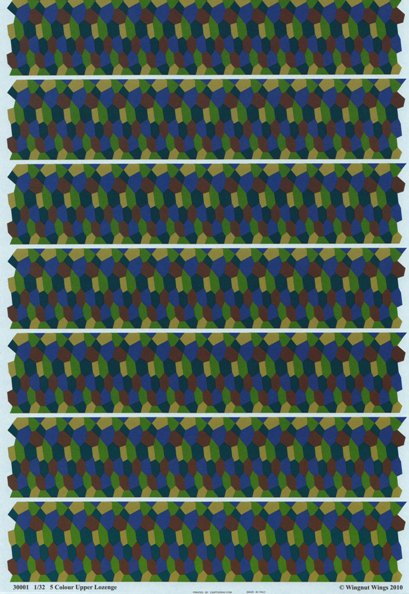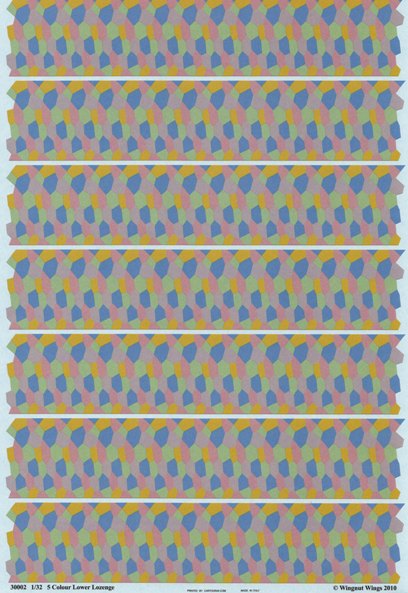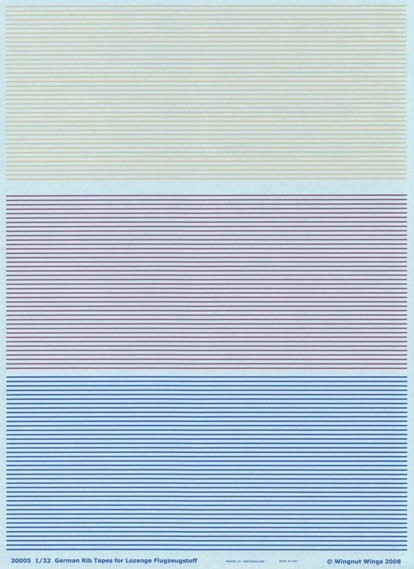Five Colour Lozenge and Rib Tape Decals

Wingnut Wings Decals, 1/32 scale
Reviewed by Rob Baumgartner

HyperScale is proudly supported by Squadron
Nothing in WWI aviation is more controversial than the subject of colour.
German “Lozenge” printed fabric is no exception. There have been many manufacturers that have attempted to produce a “correct” set of decals for the modeller with wildly different results. So when Wingnut Wings announced their interpretation of this camouflage material, they naturally found themselves in the spotlight.
Given the high level of research that WNW put into their plastic kits, there is no reason to expect anything different with their decals. So...how did they arrive at these colours?
Well...the actual pattern was traced from original fabric that WNW themselves inspected. To avoid relying on faded or discoloured material, areas that had been hidden by folds were used for this purpose. Naturally when documenting colours, it is important to make sure it’s done in natural daylight, and so it was.
Not all surviving fabric samples are the same and comparisons in the past have found slight variations in the shape of the polygons. It would also be naive to suggest that all fabric from the war years were dyed in the exact same set of colours. Demands on the manufacturers would have resulted in some variations so interpretations other than these could be equally valid.
Of course all this research is to no avail if the decal printers don’t reproduce what is presented to them.
The printers in this instance are Cartograf. Multiple samples of each lozenge decal were made before WNW was satisfied that their findings were being represented correctly. The result is a “clean” piece of material that will need a light airbrushing or “wash” if you wish to represent “weathered” fabric.

The decals themselves were printed with excellent colour density and registration. They are tough enough to stand up to the rigors of application and will settle down without decal setting solutions.
Seven “bolts” are presented on the A4 sheets, which is more than enough to cover the wings of a standard German fighter.
Rib tapes are an essential part of the application process and these can be found on sheet #30005. Three types are catered for which represent pink, blue, and uncoloured linen.

The strips are 20cm long and there are 40 examples of each.
At last Wingnut Wings have released a separate set of “lozenge” decals for the benefit of modellers.
It is an interpretation based on sound research and can be considered one example of the type used during The Great War. Reassuringly, the sheets are up to the same high standards found in the plastic kits from this manufacturer and thus will prove of immense value to the modeller.
Thanks to Wingnut Wings for the sample.
Review Text and Images Copyright © 2011 by Rob Baumgartner
Page Created 26 April, 2011
Last updated
31 May, 2011
Back to HyperScale Main Page

|
